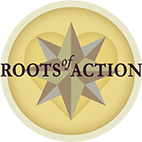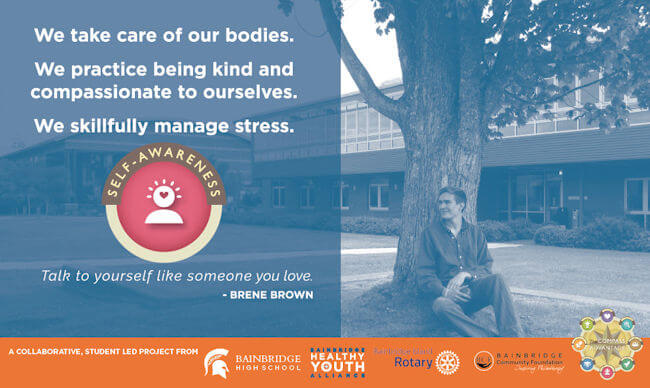
How do teens become self-aware in today’s fast-paced, hyperconnected world? According to our recent research, developing a strong sense of self-awareness may be one of the most important skills a young person can cultivate. Between the constant hum of social media, academic pressures, and evolving identities, teens are bombarded with messages about who they should be. But what if we helped them pause and ask instead: Who am I, really?
Research in developmental science and psychology shows that being self-aware helps teens navigate life with more clarity, resilience, and integrity. Self-awareness isn’t about overanalyzing every thought—it’s about cultivating the ability to tune in, reflect, and respond with purpose.
What Does It Mean to Be Self Aware?
Being self-aware means recognizing your emotions, thoughts, strengths, challenges, values, and motivations—and understanding how these inner experiences shape your behavior. It’s about developing an “inner compass” that guides decision-making, especially when external noise is overwhelming.
Self-awareness is not a static trait. It’s a life skill that deepens over time through reflection, feedback, and practice. For teenagers, whose brains are still developing the capacity for abstract thinking and self-regulation, this skill can be a game-changer.
Neuroscience reveals that the adolescent brain is uniquely primed for self-discovery. During this developmental window, teens become increasingly capable of thinking about their own thinking—a phenomenon known as metacognition (Blakemore & Choudhury, 2006; Siegel, 2014).
Why Is Self-Awareness Important?
Becoming self-aware helps teenagers develop a deeper understanding of themselves and their place in the world. Here’s why it matters:
- Better Decision-Making: Teens who are self-aware can evaluate situations more clearly, anticipate consequences, and make choices that reflect their values (Goleman, 1995).
- Emotional Regulation: Self-awareness allows young people to name and manage emotions, reducing impulsivity and improving stress resilience.
- Healthy Relationships: Understanding oneself leads to greater empathy and stronger interpersonal skills. Teens who know what they feel and why are more likely to communicate effectively and resolve conflicts peacefully (CASEL, 2020).
- Academic and Life Success: A meta-analysis of social-emotional learning programs showed significant improvements in academic performance and behavior when self-awareness was taught explicitly (Durlak et al., 2011).
- Authenticity and Integrity: When teens align their actions with their core values, they build self-trust and a stronger sense of purpose (Brown, 2012).
Everyday Strategies to Help Teens Know Themselves
Parents, teachers, and mentors play a vital role in nurturing self-awareness. Here are practical strategies rooted in research and experience:
- Normalize Inner Conversations
Encourage teens to reflect on their experiences, both positive and challenging. Reflection prompts build metacognition and identity awareness (APA, 2020). See article.
- Practice Mindfulness and Stillness
Even brief mindfulness practices can enhance self-awareness, reduce anxiety, and improve focus. Research shows that just 10 minutes a day of mindfulness can significantly improve emotional regulation in adolescents (Zoogman et al., 2015). Apps like Smiling Mind and Insight Timer offer teen-friendly content.
- Introduce Journaling
Expressive writing has been shown to improve self-reflection and mental health, especially in youth navigating stress (Pennebaker & Chung, 2011). Prompts can include:
- “What’s one thing I learned about myself this week?”
- “When do I feel most like myself?”
- Model Self-Awareness
When adults narrate their emotional responses and thought processes, teens learn emotional literacy and self-regulation by example (Siegel, 2010).
- Use Reflective Debriefing
Structured reflection techniques—like Gibbs’ Reflective Cycle—encourage deeper insight after experiences such as team projects, conflicts, or challenging classroom situations. (Markkanen et al., 2020; Gibbs, 1988).
- Foster Self-Compassion
According to Kristin Neff’s research, teens who learn to be self-compassionate bounce back more easily from challenges and experience less depression and anxiety (Neff & Germer, 2013).
The Role of Schools in Developing Self-Awareness
Schools can be powerful ecosystems for cultivating self-awareness. SEL (Social and Emotional Learning) programs that teach self-awareness explicitly improve student outcomes across academics, mental health, and relationships. The Collaborative for Academic, Social, and Emotional Learning (CASEL) identifies self-awareness as one of five essential SEL competencies.
Effective school-based approaches include:
- Daily emotional check-ins or “feelings thermometers”
- Mindful transitions between classes
- Goal setting and self-assessment rubrics
- Reflection-integrated curriculum (e.g., literature, health, social studies)
- Peer mentorship and student-led advisories
Durlak et al. (2011) found that students in SEL programs showed an 11-percentile-point gain in academic performance compared to controls.
Knowing Yourself Is a Lifelong Journey
Adolescence is the beginning—not the end—of becoming self aware. As young people encounter new challenges, relationships, and roles, their inner worlds grow more complex. The more they learn to pause, reflect, and act with purpose, the more empowered they become to shape their lives.
By giving teens the tools and space to explore who they are, we not only help them thrive—we lay the groundwork for a more compassionate, conscious, and connected future.
References
- Blakemore, S.-J., & Choudhury, S. (2006). Development of the adolescent brain: Implications for executive function and social cognition. Journal of Child Psychology and Psychiatry, 47(3–4), 296–312.
- Brown, B. (2012). The Gifts of Imperfection. Hazelden.
- CASEL. (2020). What is the CASEL framework?
- Durlak, J. A., et al. (2011). The impact of enhancing students’ social and emotional learning: A meta‐analysis of school‐based universal interventions. Child Development, 82(1), 405–432.
- Gibbs, G. (1988). Learning by Doing: A Guide to Teaching and Learning Methods. Oxford Polytechnic.
- Goleman, D. (1995). Emotional Intelligence. Bantam.
- Markkanen, P., Välimäki, M., Anttila, M., & Kuuskorpi, M. (2020). A reflective cycle: Understanding challenging situations in a school setting. Educational Research, 62(1), 46–62. https://doi.org/10.1080/00131881.2020.1711790
- Neff, K., & Germer, C. (2013). Self-compassion and psychological well-being. In Self-Compassion: The Proven Power of Being Kind to Yourself. https://self-compassion.org/
- Pennebaker, J. W., & Chung, C. K. (2011). Expressive writing: Connections to physical and mental health. Social and Personality Psychology Compass, 5(8), 546–560.
- Siegel, D. J. (2010). Brainstorm: The Power and Purpose of the Teenage Brain. Penguin.
- Siegel, D. J. (2014). The Developing Mind: How Relationships and the Brain Interact to Shape Who We Are. Guilford Press.
- Zoogman, S., Goldberg, S. B., Hoyt, W. T., & Miller, L. (2015). Mindfulness interventions with youth: A meta-analysis. Mindfulness, 6(2), 290–302.
Related Articles You May Enjoy
Self-Awareness Quotes That Help Kids Explore Their Inner Selves
Self-Awareness: How Parents Foster Meaning and Purpose in Kids
Published: June 24, 2025
Tags: internal rewards, learning, mentoring, parent engagement, parenting, positive youth development, reasoning, technology



